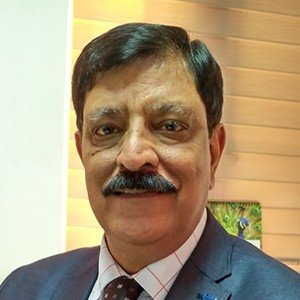India: The perils of not naming the correct inventors
13 September 2023

India: The perils of not naming the correct inventors
Patent rights are granted to inventors. When an invention is created by the joint efforts of many persons, all of them qualify to be named as inventors in the patent application. Section 6 of India’s Patents Act, 1970 states that an application for a patent may be made by any of the following persons, that is to say:
- By any person claiming to be the true and first inventor of the invention.
Section 2(y) defines “true and first inventor” in an exclusive definition that “true and first inventor” does not include either the first importer of an invention into India,or a person to whom an invention is first communicated from outside India. This leaves enough room for subjective determination of the true and first inventor. Technically speaking, the named inventors in the application for a patent are presumed to be correct for the purpose of examination proceedings. No evidence is required to prove the inventorship.
A declaration under Paragraph 9 of Form 1 signed by the inventor(s) to the effect that “I/we, the above-named inventor(s), is/are the true and the first inventor(s) for this invention” is sufficient to meet the requirement of Section 6(1)(a). Legally speaking, all the inventors who contributed to the development of the invention must be correctly named as inventors in the application for a patent. If this is not done, the person who is not named as an inventor can seek intervention of the controller before the grant of the patent under Section 28 or intervention of the court after grant. The named inventors in an application for patent are presumed correct, and the party seeking correction of inventorship must show by clear and convincing evidence that he should have been listed as a joint inventor. This correction in list of inventors is essential to claim the legal benefits available to the co-owners under Section 50 of the Patents Act.
According to Section (50)(2) of the Patents Act, “Subject to the provisions contained in this section and in Section 51, where two or more persons are registered as grantee or proprietor of a patent, then, unless an agreement to the contrary is in force, each of those persons shall be entitled, by himself or his agents, to rights conferred by Section 48 for his own benefit without accounting to the other person or persons.”
This means each co-inventor “may make, use, offer to sell, or sell the patented invention within India or import the patented invention into India, without the consent of and without accounting to the other owners.” By implication, this provision provides for an undivided share in the patent for every co-inventor.
How to prove joint inventorship
Inventorship is a question of law based on underlying facts. The claimant inventor’s testimony standing alone is insufficient to establish inventorship by clear and convincing evidence. The claimant co-inventor must supply evidence to corroborate his testimony. The corroborating evidence may be in multiple forms like contemporaneous documents or physical evidence, circumstantial evidence or oral testimony of someone other than the alleged inventor. To determine whether testimony has been sufficiently corroborated, courts apply a “rule of reason” test where all pertinent evidence is examined in order to determine whether the inventor’s story is credible. A court’s conclusion about corroboration under this “rule of reason” analysis is a factfinding. Additionally, the claimant inventor must show that he contributed significantly to the conception with the definite and permanent idea of the invention or reduction to practice of at least one claim. The right of the claimant in respect of the invention must be finally established by the decision of a court.
This is what happened in the United States in Blue Gentian, LLC v. Tristar Products, Inc., in which Blue Gentian, National Express and Tele-brands Corp(collectively, Blue Gentian)sued Tristar Products in a case decided on June 9, 2023, by the U.S. Court of Appeals, where failure to properly list a co-inventor resulted in the only named inventor losing their exclusive patent rights to enforce the patents.
Facts of the case
Blue Gentian, National Express and Tele-brands Corp. sued Tristar Products for infringement of four U.S. patents, Nos. 8,291,941, 8,291,942, 8,479,776 and 8,757,213, and two design patents, D722,681 and D724,186. Tristar counter-claimed to correct inventorship of all six patents.
After an evidentiary hearing, the district court determined that a non-party, Gary Ragner, should have been a named co-inventor on all asserted patents. Accordingly, the district court entered judgment on the inventorship counterclaim in Tristar’s favour and ordered correction of the patents. Blue Gentian appealed. The Court of Appeals affirmed the correction of the patent in favour of Tristar and Ragner was declared as a co-inventor of all the patents. Tristar received rights equal to those of Blue Gentian. Consequential to this finding, the infringement lawsuit was dismissed. In fact, Blue Gentian lost its exclusive right on these patents. This means Blue Gentian cannot enforce these patents alone and it no longer had exclusive rights to sell the patented product related to an expandable hose.
This case highlights that leaving an inventor off your application will not be in your favour in a long run. The question before the applicant for the patent now is how to ascertain the inventorship where many persons were involved during the development of the invention.
There is no guiding provision in the patent law to ascertain who is an inventor. Patent law and procedure presumes that the listed named persons who have signed the declaration in application for a patent are the inventors. If the name of any inventor is not included in the list of inventors, he may claim in the court to be declared as joint inventor. In fact, Ragner only fought to have himself added to the list of inventors. Ragner was able to establish before the court that he conceived elements claimed in at least one of the claims of each patent. He was able to prove that he conceived of the invention that was claimed by Blue Gentian’s principal, Michael Berardi. In this case, Berardi and Ragner met to discuss the invention. Ragner was able to corroborate his testimony with clinching circumstantial evidence to the court to prove his claim as a joint inventor. In this case, Ragner was able to prove that he was also the inventor.
Failed attempt to claim joint inventorship
In another dispute for correction of inventorship of U.S. patent No. 8,042,586 for a ‘self-inflating tire’ between Coda Development and Goodyear [Coda Development. v. Goodyear Tire & Rubber Co. United States District Court, N.D. Ohio, Eastern Division, March 31, 2023], the court held that the claimant inventor Frantisek Hrabal of Coda Development had failed to prove by clear and convincing evidence that, before December 21, 2009, he conceived a definite and permanent idea of the complete and operative inventions claimed in the ’586 patent, including every feature or limitation of the claimed inventions. The court dismissed the Coda's claim for correction of inventorship as to the ’586 patent. In this case, the claimant had failed to prove inventorship by clear and convincing evidence. This case highlights that mere testimony is no sufficient to get favourable order for joint inventorship in a patent. The claimant should corroborate it with supporting evidence.
Cautionary remarks
It is not unusual for companies to collaborate on the inventions with others. It is generally believed by the companies that the eventual invention was their idea and the others only contributed to the development of the product. It is sometimes a case of where the outsiders were hired and paid to assist in development of some elements of the invention. Such loose collaboration on invention leads to errors in adding all of the inventors to the patent application. Companies applying for a patent may confuse the owning of the patent – ownership – with who should be named as inventor – inventorship.
This situation is avoidable in many ways. The company with the inventive idea should identify all inventors carefully. They can get an assignment agreement signed by all the inventors, which transfers their rights to a single entity. This entity can be an individual or the company that will proceed to obtain a patent and exploit the invention. In Blue Gentian, had Berardi entered into an agreement with Ragner to assign Ragner’s rights to Blue Gentian before working with him, this awkward situation could have been avoided. Similarly, had Ragner gotten a non-disclosure agreement or confidentiality agreement signed by Berardi, Blue Gentian could not have used the patent without his written authorization. Before the collaboration meeting ever happens, it is best that an agreement stating to whom any improvements resulting from the meeting should be assigned.
We must appreciate that patent rights are not easy to obtain. They are valuable and utmost care should be exercised to ensure that all inventors are properly named in the patent application. An expert opinion can make a difference to ensure that exclusive patent rights are not lost for the want of missing the name of an inventor, as happened in Blue Gentian. In Goodyear, the court dismissed claims of the inventor for lack of clear and convincing evidence. We have not come across such cases in Indian courts, but with the collaborations of multidisciplinary fields becoming common, disputes relating missing of inventors may crop up if proper precautions are not taken by the applicant for the patents.








